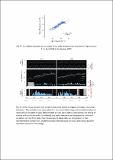Files in this item
Temperature mediates chorusing behaviour associated with spawning in the sciaenid Argyrosomus regius
Item metadata
| dc.contributor.author | Vieira, Manuel | |
| dc.contributor.author | Amorim, M. Clara P. | |
| dc.contributor.author | Marques, Tiago A. | |
| dc.contributor.author | Fonseca, Paulo J. | |
| dc.date.accessioned | 2023-01-31T11:30:11Z | |
| dc.date.available | 2023-01-31T11:30:11Z | |
| dc.date.issued | 2022-09-22 | |
| dc.identifier | 281863992 | |
| dc.identifier | bfa5542e-6077-4d86-8c7b-b99f44982849 | |
| dc.identifier | 85140465904 | |
| dc.identifier | 000865793900009 | |
| dc.identifier.citation | Vieira , M , Amorim , M C P , Marques , T A & Fonseca , P J 2022 , ' Temperature mediates chorusing behaviour associated with spawning in the sciaenid Argyrosomus regius ' , Marine Ecology Progress Series , vol. 697 , pp. 109-124 . https://doi.org/10.3354/meps14128 | en |
| dc.identifier.issn | 0171-8630 | |
| dc.identifier.other | Jisc: 635293 | |
| dc.identifier.other | ORCID: /0000-0002-2581-1972/work/121753987 | |
| dc.identifier.uri | https://hdl.handle.net/10023/26859 | |
| dc.description | Funding: This study was funded by the Science and Technology Foundation, Portugal, grant SFRH/BD/115562/2016 to M.V.; strategic projects UID/MAR/04292/2020 to M.C.P.A. by MARE, UID/BIA/ 00329/2020 to P.J.F. by cE3c and UIDB/00006/2020 to T.A.M. by CEAUL; and project PTDC/BIA-BMA/30517/2017. | en |
| dc.description.abstract | Climate change is leading to an increase in the frequency and intensity of daily temperature extremes in aquatic environments, posing a threat to ectothermic animals such as fishes. Temperature shifts can impact their reproductive cycle and behaviour, including acoustic signalling associated with courtship and mating in vocal fishes. Here, we examined the effect of temperature and other environmental factors on spawning-related chorusing behaviour in the meagre Argyrosomus regius. Using an automatic recognition system based on hidden Markov models coupled with one-third octave band sound level analysis, we extracted meagre daily vocal activity over 4 yr of passive acoustic monitoring (PAM) in the Tagus estuary (Portugal). Meagre vocal activity showed a distinct diel pattern, with choruses being most prevalent at dusk. Chorus activity started earlier in years with warmer springs, while the end of the season was concurrent with the rise in water temperature. Circa 70% of daily variations were explained by changes in water temperature. Tidal cycle, lunar phase and changes in daylength did not appear to affect vocal behaviour. Choruses were detected on days with mean water temperature ranging from 15-25°C, with stronger chorusing observed around 18°C. Abrupt temperature changes caused disruption in choruses and likely in associated spawning. This study highlights the importance of temperature to fish reproduction and demonstrates that PAM can be a useful tool for long-term conservation management plans. PAM may also allow us to predict how temperature shifts due to climate change may affect fish reproduction, using vocal fishes as model species. | |
| dc.format.extent | 16 | |
| dc.format.extent | 2128615 | |
| dc.format.extent | 202042 | |
| dc.language.iso | eng | |
| dc.relation.ispartof | Marine Ecology Progress Series | en |
| dc.subject | Soundscape | en |
| dc.subject | Passive acoustic monitoring | en |
| dc.subject | Bioacoustics | en |
| dc.subject | Seasonal patterns | en |
| dc.subject | Diel patterns | en |
| dc.subject | Rhythms | en |
| dc.subject | Field study | en |
| dc.subject | Automatic detectors | en |
| dc.subject | QH301 Biology | en |
| dc.subject | NDAS | en |
| dc.subject | SDG 13 - Climate Action | en |
| dc.subject | AC | en |
| dc.subject | MCC | en |
| dc.subject.lcc | QH301 | en |
| dc.title | Temperature mediates chorusing behaviour associated with spawning in the sciaenid Argyrosomus regius | en |
| dc.type | Journal article | en |
| dc.contributor.institution | University of St Andrews. Scottish Oceans Institute | en |
| dc.contributor.institution | University of St Andrews. Centre for Research into Ecological & Environmental Modelling | en |
| dc.contributor.institution | University of St Andrews. School of Mathematics and Statistics | en |
| dc.contributor.institution | University of St Andrews. Arctic Research Centre | en |
| dc.identifier.doi | https://doi.org/10.3354/meps14128 | |
| dc.description.status | Peer reviewed | en |
This item appears in the following Collection(s)
Items in the St Andrews Research Repository are protected by copyright, with all rights reserved, unless otherwise indicated.


